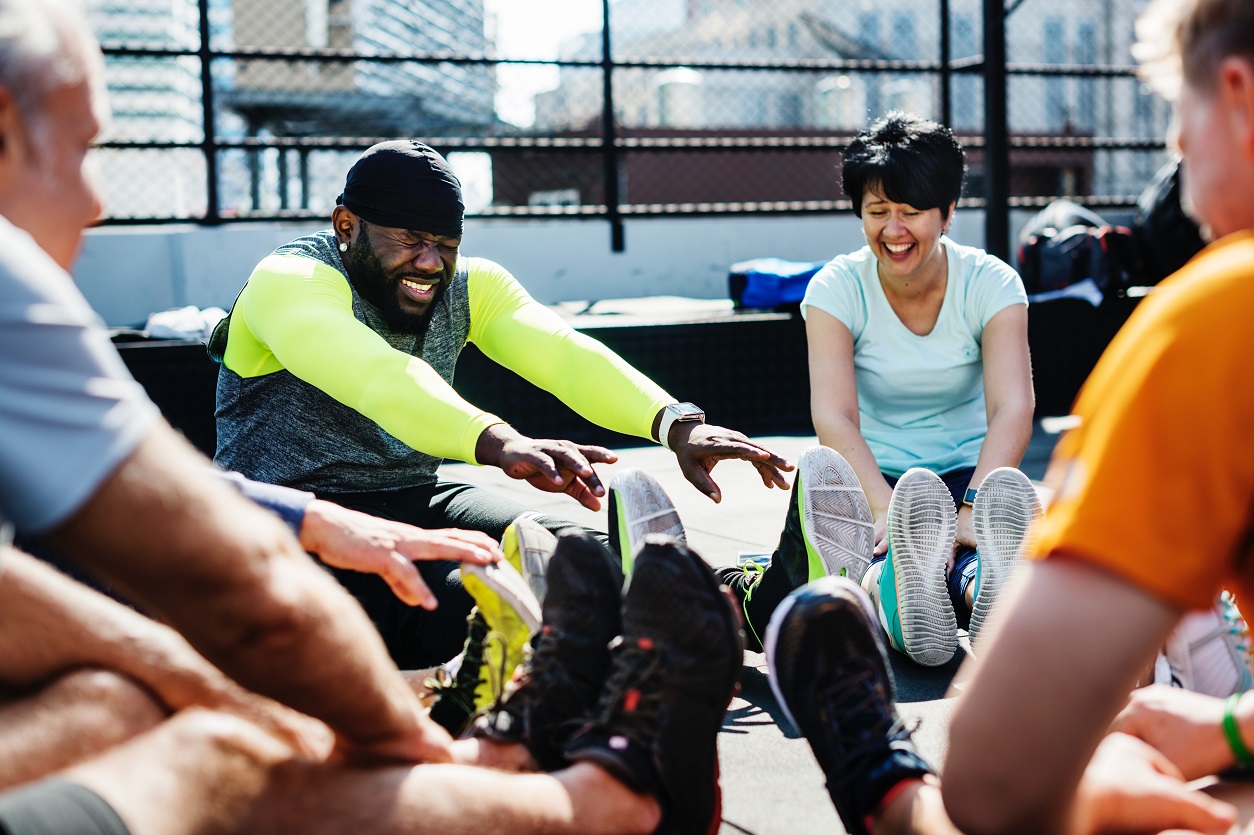Walking Through Challenging Times

Written By: Serena E. Weisner, MS - UNC Thurston Arthritis Research Center; Leigh F. Callahan, PhD - UNC Thurston Arthritis Research Center; Kirsten R. Ambrose, PhD - Thurston Arthritis Research Center
As a result of a fast-moving virus, our lives have slowed. Americans – and people all over the globe – are staying home. We are no longer rushing out the door in the morning to drop kids at school, hurry to the office, jump from meeting to meeting, battle rush-hour traffic on the way home, make a meal for dinner (preferably in 30-minutes or less!), fall into bed, and do it all again the next day.
Events are being canceled. There have been no graduations, sports tournaments, or spring break vacations. It’s unprecedented, to say the least. When we think we have started to adapt, things change.
The slowed pace, altered schedules, and adjusted expectations don’t mean, however, that we can discontinue management of our health and/or chronic conditions, such as Osteoarthritis (OA). Right now, amidst the social distancing, quarantining, and uncertainty, 1 in 7 adults are also working to manage their OA symptoms.
According to the National Public Health Agenda for Osteoarthritis: 2020 Update, four evidence-based public health interventions are considered the first line of therapy for OA:
- Self-management education
- Physical activity
- Weight management
- Injury prevention.
Luckily, all of these strategies are both applicable and achievable during these challenging and changing times. They just might look a little different.
Let’s focus on one of the four recommended public health strategies: physical activity
Right now, many gyms, recreation facilities, swimming pools, and other settings focused on exercise, are closed. People are turning to at-home workouts and activities that they can do within or just outside their own homes.
As research shows us, people with OA can and should take part in physical activity. It is, in fact, one of the most effective strategies to manage common OA symptoms such as pain and stiffness. That being said, some forms of exercise are considered more beneficial than others, one of which is walking.
Why is walking important to maintain good health?
Walking is not only an ideal activity for OA but for many other ongoing health conditions. For many people, it is also highly accessible. With a sturdy pair of shoes and a safe walking environment (inside or outside), most people can achieve their own reasonable walking goals, as well as to attain the recommendations for adults the CDC’s Physical Activity Guidelines for Americans: 2nd Edition - at least 150 to 300 minutes of moderate-intensity aerobic activity (e.g. brisk walking). Not to mention, moderate physical activity, like walking, can improve a person’s cognition (thinking), while decreasing symptoms of depression, anxiety, and stress.
Now, more than ever is the perfect time to start a walking program. For those who need added support and guidance along the way, the Arthritis Foundation’s Walk With Ease program provides information, step-by-step instruction, and behavior modification strategies to encourage safe, comfortable, and effective walking.
Although this evidence-based program can be offered in group settings, the self-directed version is ideal in our current climate. During these challenging and changing times, and In support of all Americans, especially those with OA, the Osteoarthritis Action Alliance is providing FREE Walk With Ease guidebooks by visiting www.WalkWithArthritis.org.
We know that resources are tight for many people right now, but we feel strongly that the ability to manage OA, and other chronic conditions, remains essential. Please help us share this resource with others. Even though these times are challenging, we can walk through them together.
More Articles

Changing Cooking Habits: How to Cook Healthy Food for your Family
The increased demand for cooking during the COVID-19 pandemic has led to many households feeling overwhelmed. Learn how to de-stress the cooking process with these tips and tricks.

Understanding the Impact of Trauma: How Trauma Can Affect Your Body & Mind
Learn how violence and trauma affects millions of people worldwide and how trauma can impact your mind and body.


